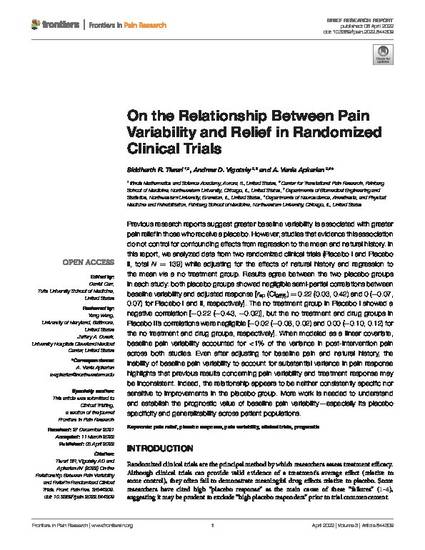
Previous research reports suggest greater baseline variability is associated with greater pain relief in those who receive a placebo. However, studies that evidence this association do not control for confounding effects from regression to the mean and natural history. In this report, we analyzed data from two randomized clinical trials (Placebo I and Placebo II, total N = 139) while adjusting for the effects of natural history and regression to the mean via a no treatment group. Results agree between the two placebo groups in each study: both placebo groups showed negligible semi-partial correlations between baseline variability and adjusted response [rsp (CI95%) = 0.22 (0.03, 0.42) and 0 (−0.07, 0.07) for Placebo I and II, respectively]. The no-treatment group in Placebo I showed a negative correlation [−0.22(−0.43,−0.02)], but the no-treatment and drug groups in Placebo II’s correlations were negligible [−0.02(−0.08,0.02) and 0.00 (−0.10, 0.12) for the no-treatment and drug groups, respectively]. When modeled as a linear covariate, baseline pain variability accounted for less than 1% of the variance in post-intervention pain across both studies. Even after adjusting for baseline pain and natural history, the inability of baseline pain variability to account for substantial variance in pain response highlights that previous results concerning pain variability and treatment response may be inconsistent. Indeed, the relationship appears to be neither consistently specific nor sensitive to improvements in the placebo group. More work is needed to understand and establish the prognostic value of baseline pain variability—especially its placebo specificity and generalizability across patient populations.
